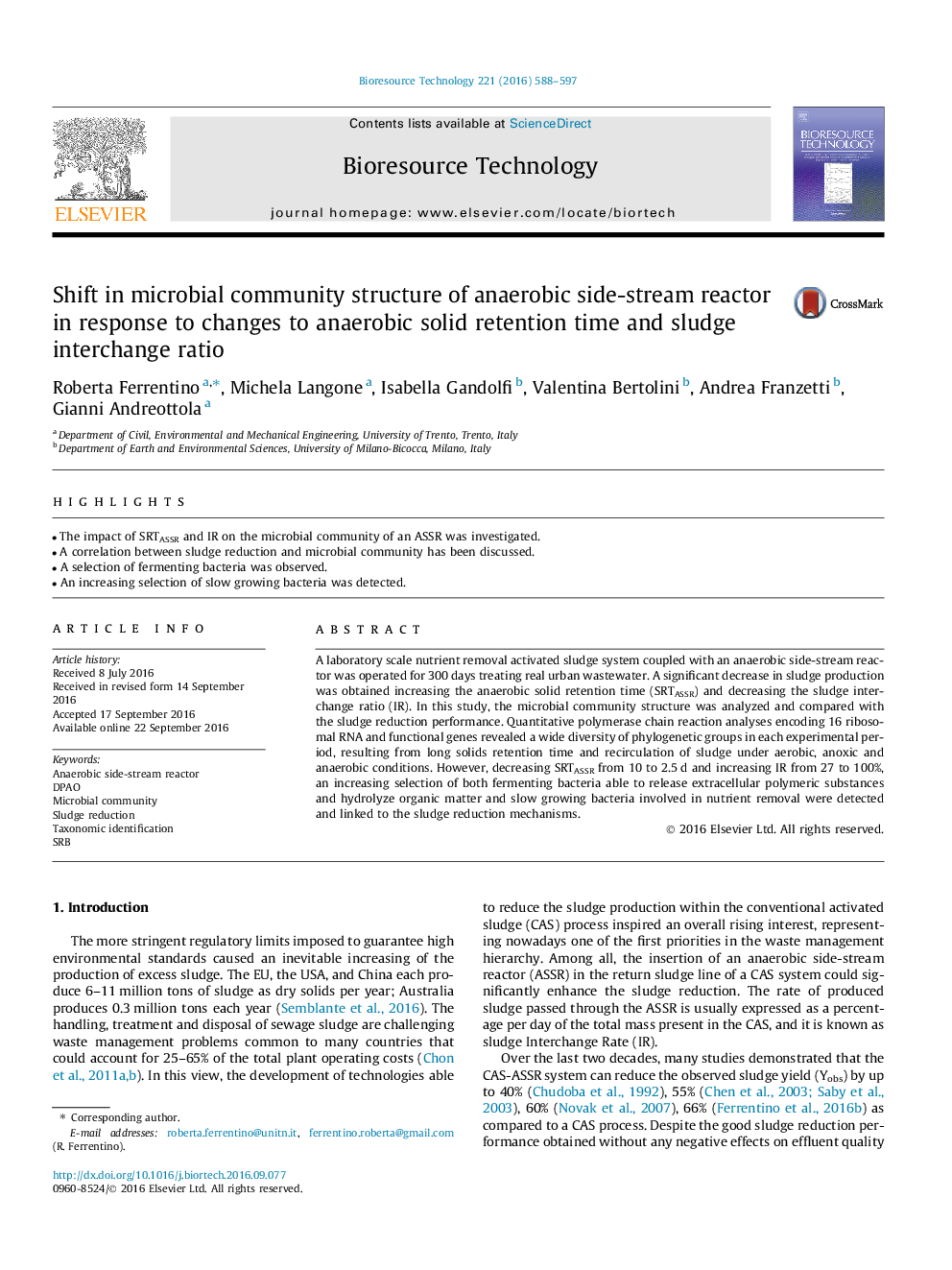| Article ID | Journal | Published Year | Pages | File Type |
|---|---|---|---|---|
| 4998050 | Bioresource Technology | 2016 | 10 Pages |
â¢The impact of SRTASSR and IR on the microbial community of an ASSR was investigated.â¢A correlation between sludge reduction and microbial community has been discussed.â¢A selection of fermenting bacteria was observed.â¢An increasing selection of slow growing bacteria was detected.
A laboratory scale nutrient removal activated sludge system coupled with an anaerobic side-stream reactor was operated for 300 days treating real urban wastewater. A significant decrease in sludge production was obtained increasing the anaerobic solid retention time (SRTASSR) and decreasing the sludge interchange ratio (IR). In this study, the microbial community structure was analyzed and compared with the sludge reduction performance. Quantitative polymerase chain reaction analyses encoding 16 ribosomal RNA and functional genes revealed a wide diversity of phylogenetic groups in each experimental period, resulting from long solids retention time and recirculation of sludge under aerobic, anoxic and anaerobic conditions. However, decreasing SRTASSR from 10 to 2.5Â d and increasing IR from 27 to 100%, an increasing selection of both fermenting bacteria able to release extracellular polymeric substances and hydrolyze organic matter and slow growing bacteria involved in nutrient removal were detected and linked to the sludge reduction mechanisms.
